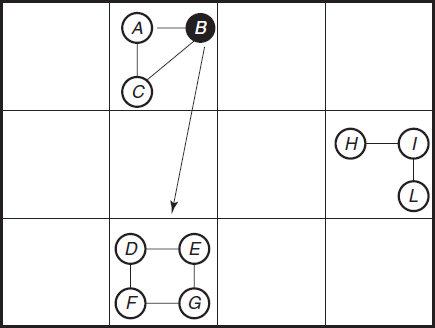1.13 PROBLEMS AT PHYSICAL, MAC, AND TRANSPORT LAYERS
Since a WSAN can be treated as a union of a WSN and an actuator network (mobile ad hoc network), current problems and challenges with sensor networks and ad hoc networks also exist in WSANs.

Figure 1.10 Social clustered network and social movement.
At the physical layer, it is required to process signals, deal with the hardware failure of sensor nodes, manage limited bandwidth and limited power, control sensing range and transmission range, and select antennas and operating channels. Energy scavenging and nontraditional power sources are surveyed in Roundy et al. (2005). Sensors use wireless communication, where RF noise and multipath fading causes severe packet losses. It is easy to eavesdrop and to launch spoofing or Denial-of-Service attacks. Infrared and optical lines of sight are alternatives that are considered. Nodes are at physical risk because they can be defective, lost, damaged, compromised or can have expired. Wireless communication implies limited bandwidth and in most cases also limited power (unless rechargeable battery, solar power or other energy supply alternatives are feasible). Wireless communication also implies one-to-all communication where messages sent by one node are simultaneously received by all neighbors within transmission radius. Smart omnidirectional antennas can also be considered (especially for ...
Get Wireless Sensor and Actuator Networks: Algorithms and Protocols for Scalable Coordination and Data Communication now with the O’Reilly learning platform.
O’Reilly members experience books, live events, courses curated by job role, and more from O’Reilly and nearly 200 top publishers.

